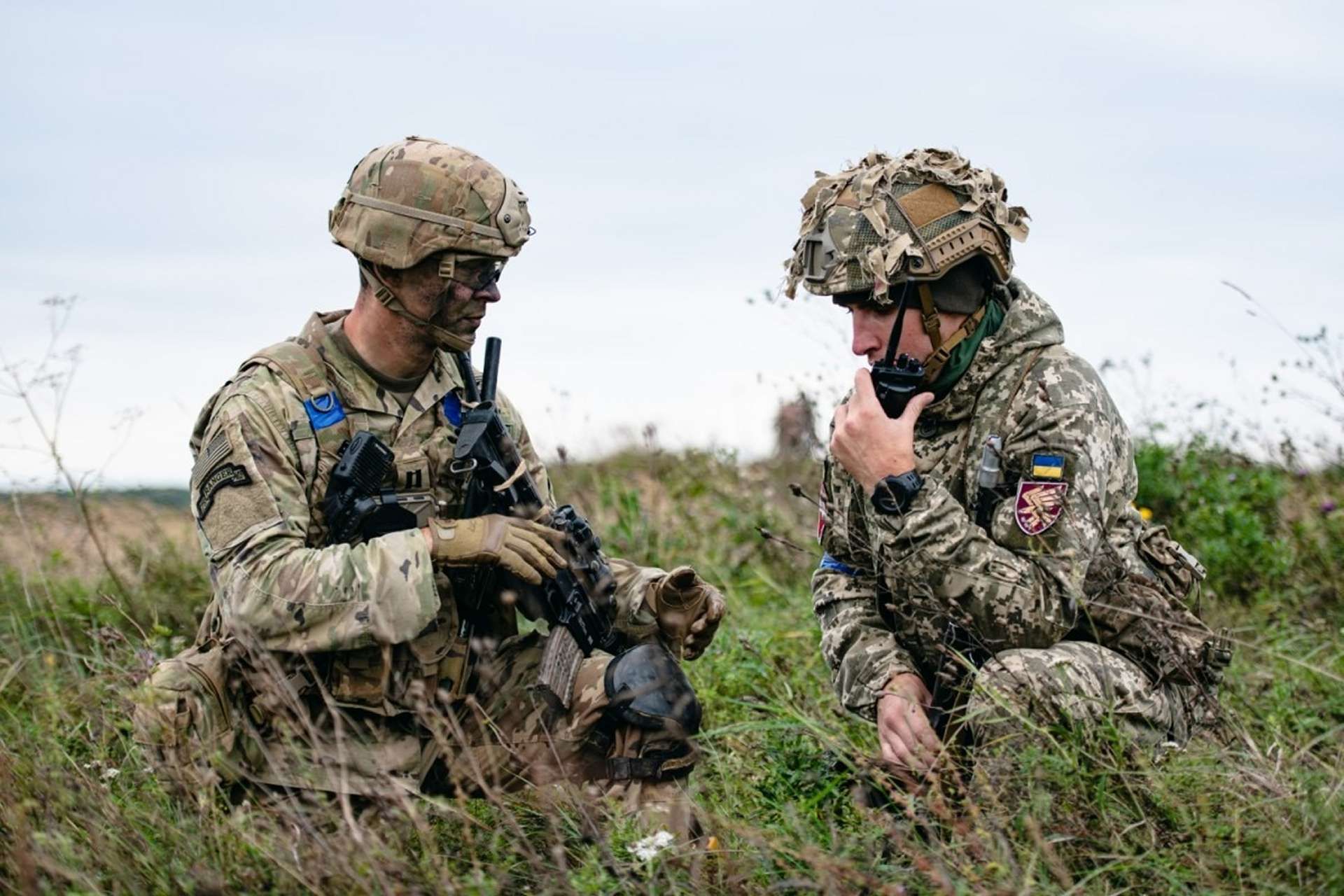Breaking news
US Says Sending Military Trainers to Ukraine is Inevitable.
The prospect of NATO troops being deployed to Ukraine is becoming increasingly tangible, according to recent statements by General Charles Q. Brown Jr., the Chairman of the US Joint Chiefs of Staff. In a statement to The New York Times, General Brown indicated that the dispatch of Western military trainers to Ukraine is inevitable at some point, marking a significant shift from NATO's previous hesitation to commit troops on the ground.
Follow Army Recognition on Google News at this link

A U.S. Army paratrooper with a member of the Lithuanian-Polish-Ukrainian Brigade to establish a joint security posture on a drop zone during Exercise Rapid Trident 21 (Picture source: US Army)
This disclosure comes a day after US Secretary of State Antony Blinken mentioned a notable softening in the American stance regarding the use of US-manufactured weapons to strike targets within Russian territory, raising concerns about potential Russian retaliatory actions. In response to Blinken's remarks and developments on the ground, Russian President Vladimir Putin ordered military maneuvers involving Russian nuclear missiles, signaling the risks of NATO's direct involvement in the conflict.
The Ukrainian front is experiencing mounting pressure, particularly with renewed Russian assaults on the city of Kharkiv, marking significant advances for the first time in months. This situation is compounded by an ammunition crisis and a manpower shortage, with undisclosed losses reaching catastrophic levels, according to Ukraine’s former top general, Valerii Zaluzhnyi.
In response to these challenges, Ukraine has requested its American and NATO allies to help train 150,000 new recruits. A Ukrainian delegation is currently in Washington lobbying for more US aid, although so far, the US has rejected these calls for direct involvement. Nevertheless, General Brown stated that the arrival of NATO trainers appears inevitable.
Historically, American training of Ukrainian troops took place in locations such as Poland, Germany, and the United States. However, logistical challenges in transporting troops to training sites and back to the front lines have proven time-consuming. The US previously facilitated a NATO training program in Yavoriv, Ukraine, but withdrew at the start of the war. NATO has now tasked General Christopher G. Cavoli, the Supreme Allied Commander Europe, with devising a strategy to bolster support for Ukraine while minimizing risks.
Options considered include training Ukrainian forces in Lviv, near the Polish border, despite recent Russian bombings in the area. Alternatively, large-scale training could continue in camps in Germany and Poland, though this would involve significant logistical efforts to return troops to the front lines.
This development follows statements by French President Emmanuel Macron, who had previously suggested that NATO should not discount the possibility of deploying troops, in an effort to maintain "strategic ambiguity" against Russia. Several European countries, including Estonia and Lithuania, have expressed their willingness to send military personnel to Ukraine, although countries like Germany have excluded any direct participation in the conflict.
The current situation indicates a major escalation in NATO's involvement in Ukraine, a movement that could radically transform the dynamics of the ongoing conflict. While the Biden administration had previously stated that such actions could lead to World War III, each previous statement against direct involvement appears to be gradually revised or reversed.
In this context of escalating tensions and deteriorating battlefronts, the decision to deploy NATO troops, initially presented as training assistance, could quickly evolve into active combat engagement, highlighting the inherent risks of direct confrontation with Russia.


























